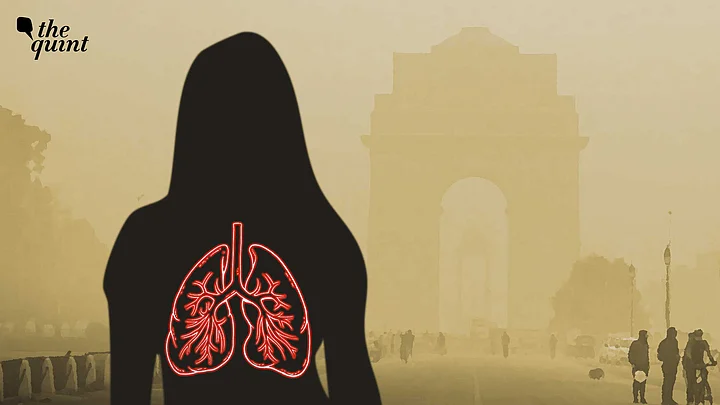November is Lung Cancer Awareness Month. Across the US and Europe, white ribbons mark solidarity with patients, caregivers, advocates and doctors. In India, silence reigns, even though 93 of the world’s 100 most polluted cities are here, and here, lung cancer is rising alarmingly among non-smokers, especially young women.
Nearly one in three lung cancer patients in India today has never smoked, and doctors are seeing women in their late 20s and 30s being diagnosed with advanced disease.
This is not a smoker’s disease anymore — it is a breather’s disease, driven by toxic air and environmental exposures.
Last month, pink ribbons and balloons filled the air for Breast Cancer Awareness Month. Yet, few realise that lung cancer kills more women than breast cancer does. In India, lung cancer survival rates are among the lowest globally, with only 15-20 percent of patients surviving five years after diagnosis. Most are diagnosed at stages III or IV.
Unlike countries like Vietnam, which have begun systematic screening programmes using chest X rays and Artificial Intelligence, India has no national or even targeted screening programme for lung cancer in highly polluted cities. This absence of early detection is costing thousands of lives every year.
The Delusion of “Improved” Air Quality
Delhi recently celebrated its “lowest average AQI in three years” for the first half of November. The mean AQI stood at 348—compared to 367 in 2024 and 376 in 2023. But to rejoice at 348 is delusional. The World Health Organisation guideline states that annual average concentrations of PM2.5 should not exceed 5 µg/m³, and 24-hour averages should not exceed 15 µg/m³ more than 3-4 days a year. Against this benchmark, Delhi’s air is not just unhealthy; it is catastrophic.
Anyone landing in Delhi knows this viscerally. The plane door opens, and the smell of smoke hits you. You don’t need monitors to tell you what your lungs already know.
The Supreme Court’s remark that “Delhi can’t be brought to a standstill” while rejecting pleas for drastic anti-pollution measures is profoundly tone-deaf. It trivialises the lived reality of millions who are already being forced to stand still—by breathlessness, disease, and shortened lifespans—because of toxic air.
If pollution were truly ‘not such a big deal,’ the Lords of our courts wouldn’t be asking their lawyers to appear virtually at this time— shielding themselves from toxic air while ordinary citizens are left to choke in it.
A Personal Cost
I have lived and worked in Delhi for the past decade. At 35, I was diagnosed with stage 4 non-smoker’s lung cancer. I often wonder: what if I had not been here? Would I have escaped this fate? It feels deeply unfair. I have dedicated my career to strengthening public health in India, yet the very air I breathe has potentially cut short my life by decades.
It is embarrassing that privileged residents of the national capital flee between October and January to escape toxic air. We have normalised this seasonal exodus, but the truth is stark: we are all dying in Delhi, some faster than others.
Cancer is multifactorial, yes, but in people like me — exposed to constant, inordinate levels of pollution — one can be almost certain that toxic air was a key factor.
India does not even measure these cases accurately. Diagnosing oncogene-driven cancers such as ALK, EGFR or ROS requires tissue biopsy followed by next-generation sequencing. How many patients can access this? How many even know what it is? Without diagnosis, without measurement, how can we conclude these cancers are “rare”?
Treatment Inequities
Even when diagnosed, treatment options expose another injustice. Targeted therapies and immunotherapies — lifesaving for cancers like mine — are prohibitively expensive, even for the so-called middle class. Ninety-nine percent of India’s population cannot afford them.
Schemes like Ayushman Bharat continue to cover only outdated, toxic chemotherapies, despite the National Cancer Grid guidelines recommending immunotherapy and targeted therapy. Why even bother offering patients treatments that medicine has already moved beyond? This is not just a medical gap -- it is a moral failure. It signals that our lives are cheaper than those in the Western world.
India urgently needs:
Systematic screening programmes for lung cancer in high-risk urban populations.
Accurate registries and diagnostics, including molecular testing, to capture the true burden of oncogene-driven cancers.
Financial protection for modern therapies, not just outdated chemotherapies.
Policy action on air pollution, recognising it as a public health emergency.
A Call to Action
Lung Cancer Awareness Month should not pass unnoticed in India. White ribbons must join the pink ones. Awareness must translate into action -- screening, diagnosis, treatment, and above all, prevention.
We cannot continue to normalise AQIs of 348 as “progress.” We cannot accept that young women, non-smokers and entire communities are condemned to disease because of the air they breathe.
Delhi’s air pollution has given me lung cancer and stolen decades from my life. If that does not shock us into action, what will?
(Urvashi Prasad is Former Director NITI Aayog and Senior Fellow Pahle India Foundation. She can be reached at @urvashi01. This is an opinion piece. The views expressed above are the author’s own. The Quint neither endorses nor is responsible for them.)
